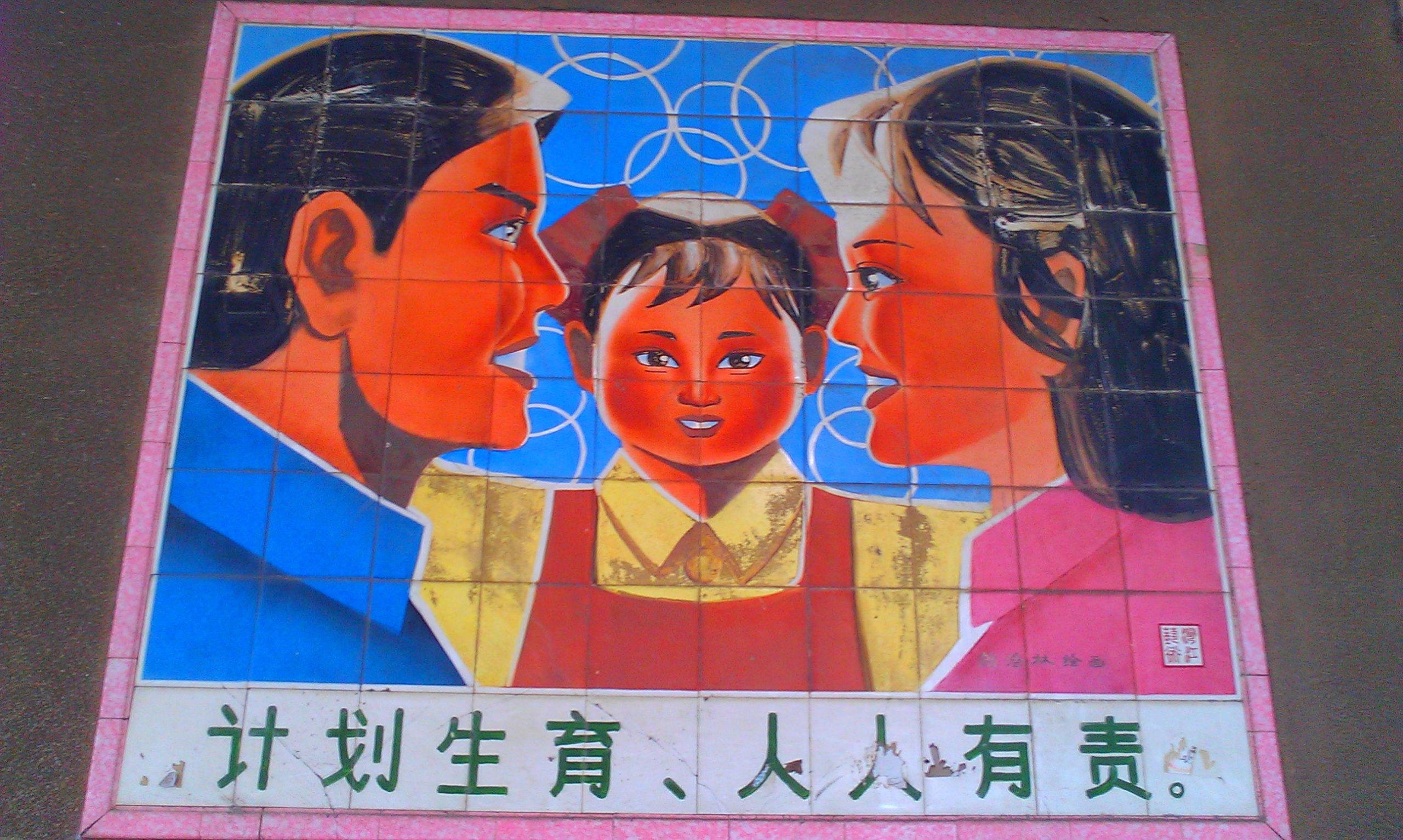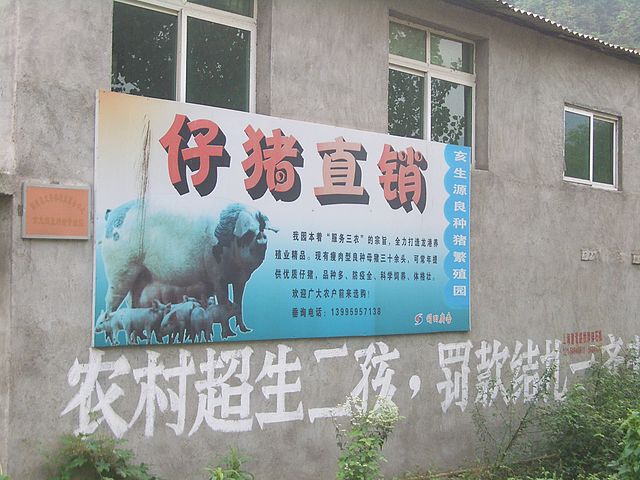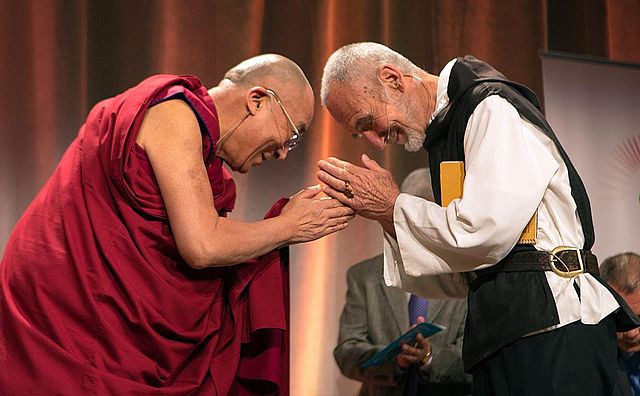In a village north of the Longgang Zhen (the town) in Yangxin county. The hand-painted white text on the wall (below the pig-breeder’s ad) apparently threatens village women who’ve exceeded the two-child limit with tubal ligation.
[CN: Reproductive coercion, crimes against humanity] Last week headlines that China has abandoned its one child policy (after 35 years) have rocked international news media. There are many aspects of Chinese history that get really simplified when most non-Chinese people talk about it. This is one of them. Here are some important things to keep in mind.
1. The policy was never absolute

Enforcement of the policy generally occurred at the local level. Ethnic minorities were exempt. Rural families were allowed two children (or two children if the first was a girl) almost since the start of the policy. The aim being to allow the breadbasket and ricebowl of China to continue since rural families generally “needed” more children to keep small farms going. In the 2000s, couples who were both only children were generally allowed to have two children. In 2013 this was generally relaxed to heterosexual couples where one of the spouses was an only child.
2. The policy probably didn’t make much difference

The news reports keep citing the Chinese Communist Party’s official statistics, that the policy prevented 400 million additional births. This is meant to of course sound scary: the idea of a China with 1.77 billion people instead of 1.37 billion would scare the pants off many people. But the thing about statistics coming out of a dictatorship with no free press is…that they’re often full of shit. The general consensus of demographers outside China seems to be this figure is very exaggerated. From a professor of social policy quoted by the BBC:
“The 400 million figure is based on the assumption that if the one-child policy hadn’t come in, the fertility rate would have stayed the same,” says Gietel-Basten. This would have been unique to China among countries experiencing similar industrial and economic developments in that period, he adds. [Source]
At the moment with China’s higher level of urbanisation, China’s city-dwellers are culturally similar to city-dwellers in other countries. They’re just as reluctant to have large families. After all, increasing prosperity and child survival is one of the best ways to make population growth sustainable.
3. The policy was brutal reproductive coercion
Some more details from a previous post I wrote, but basically this is about as opposite to pro-choice as you can get. The law’s enforcement has ranged from fines to forced sterilisation to forced abortion and infanticide by the state. This includes throwing viable foetuses into rubbish bins:
A few days later, while walking along the banks of the Pearl river, I saw a dead baby lying in an opened black plastic bag. I had seen discarded foetuses in China many times before: purple lumps of flesh lying on rubbish heaps or inside communal dustbins. But this was a pale, fully grown, newborn baby, with the umbilical cord still attached. A passerby had spotted it, and was prodding it with a wooden stick. [Source]
4. The reproductive coercion is not over
It’s misleading to say that the one-child policy is over. What’s really happened is that a formal one-child policy has been replaced with a two-child policy. Local areas in China are still likely to have strict population quotas that will lead to state-based and mob-based violence like the one in the photo at the top of this post. What a generous state, magnanimously doubling the number of kids that some Chinese (those few still subject to the policy) could have!
5. The policy has screwed with China’s demographics
In a culture where having girls is considered less valuable, what would be the predictable effect of such a policy? China now has 0.86 girls born for every boy, and 33 million more men than women in the population. In terms of militarism, family planning, social unrest, mental health and the like, this is a disaster that’s already happening and is likely to get worse in the next few decades. More here
In this post, Costa says:
OK, it weirds me out how the stuff we need to do to end climate change is also the stuff we need to do to make the world better:
- less coal? less smog, sad farmers, dying Chinese people.
- more public transport? more jobs, less inequality, less traffic.
- more low-carbon jobs? that’s nurses, teachers, carers, social workers, all people that help people the most.
[…]Is it all just coincidence or… is some higher power trying to tell us living as part of and within nature is the frikking answer?
So is it coincidence, or does the REALLY REALLY bitter lesson of history and statistics tell us that reproductive rights is always the way to go and actually balances people’s right to self-expression with a better world?





0 Comments